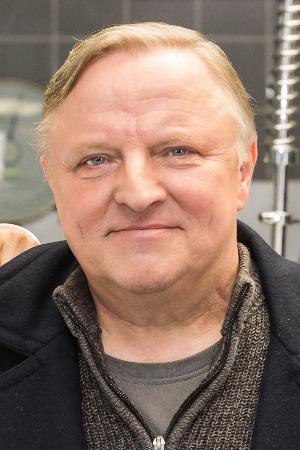Ich bin! Margot Friedländer (TV)
- Original title
- Ich bin! Margot Friedländer
- Year
- 2023
- Running time
- 90 min.
- Country
 Germany
Germany- Director
- Screenwriter
- Cast
-
 Iris Berben
Iris Berben- Jannik Büddig
- Rainer Frank
- Julia Anna Grob
 Charly Hübner
Charly Hübner Herbert Knaup
Herbert Knaup- Peter Lewys Preston
- Konstantin Lindhorst
- Annika Olbrich
 Axel Prahl
Axel Prahl- Thea Rasche
- Renate Regel
- Ilse Ritter
- See all credits
- Music
- Cinematography
- Producer
UFA Documentary. Distributor: ZDF- Genre
- Drama | TV Movie. Holocaust. 1940s
- Synopsis
- The life story of Holocaust survivor Margot Friedländer (born November 5, 1921) told in the form of a docudrama: her interview statements, in which she is still able to describe her experiences movingly despite her old age, form the basis of the film. The screenplay is based on Margot Friedländer's autobiography "Try to rebuild your life". Born in Berlin in 1921, after finishing school Margot worked as a teacher in a tailor's shop, acted in theater for the Jewish Cultural Association and sewed costumes for the stage. Her family's efforts to escape persecution under the Nazi regime by migrating abroad failed. After her parents separated in 1937, Margot lived with her mother and younger brother Ralph. Beginning in 1941, Margot had to perform forced labor and give up her beloved job at the Jewish Cultural Association. In January 1943, Margot's mother plans to flee with her children to relatives in Upper Silesia. But shortly before, Ralph is arrested by the Gestapo. The mother decides to follow her son voluntarily to the Auschwitz extermination camp. Margot is left alone. In addition to an amber necklace, an address book and her purse, her mother left her the important message: "Try to rebuild your life..." Margot Bendheim, then 21 years old, went into hiding, dyed her hair and even had a nose job to go unnoticed. She has to constantly change accommodations and depends on the welfare and mercy of her helpers, who sometimes take advantage of her desperate situation and demand "rewards," including sexual ones. Margot has little chance to defend herself. The bombings, which became increasingly frequent in Berlin from 1943 onwards, were even more dangerous for Margot and other so-called "U-boats" than for the rest of the Berlin population. You can't go to air raid shelters or bomb shelters and simply hope not to be buried under rubble or become a victim of flames. In the spring of 1944, Margot was arrested by the so-called Jewish "captors". The Gestapo forced Jews to work for them as investigators to locate Jewish "illegals. Despite their cooperation, many "captors" were in most cases unable to prevent their relatives from being deported and killed. After her arrest, Margot Bendheim was deported to the Theresienstadt concentration camp. When the National Socialists evacuated Auschwitz shortly before the end of the war and the death trains arrived at Theresienstadt, she realized that she would never see her mother and brother Ralph again. Both were murdered in the extermination camp, like more than a million other victims of the unjust regime. Margot survived. After liberation she married Adolf Friedländer, an acquaintance from her theatrical days in Berlin whom she met again in Theresienstadt. The couple emigrated to the United States and built a new life there. Only after her husband's death did Margot visit her former hometown in 2003 at the invitation of the Berlin Senate. Since 2010 she has been living in Berlin again and regularly visits schools to tell young people about her life.
- Movie Soulmates' ratings
-
Register so you can access movie recommendations tailored to your movie taste.
- Friends' ratings
-
Register so you can check out ratings by your friends, family members, and like-minded members of the FA community.
Is the synopsis/plot summary missing? Do you want to report a spoiler, error or omission? Please send us a message.
If you are not a registered user please send us an email to [email protected]All copyrighted material (movie posters, DVD covers, stills, trailers) and trademarks belong to their respective producers and/or distributors.
For US ratings information please visit: www.mpaa.org www.filmratings.com www.parentalguide.org

 US
US  Canada
Canada  Mexico
Mexico  Spain
Spain  UK
UK  Ireland
Ireland  Australia
Australia  Argentina
Argentina  Chile
Chile  Colombia
Colombia  Uruguay
Uruguay  Paraguay
Paraguay  Peru
Peru  Ecuador
Ecuador  Venezuela
Venezuela  Costa Rica
Costa Rica  Honduras
Honduras  Guatemala
Guatemala  Bolivia
Bolivia  Dominican Rep.
Dominican Rep. 
